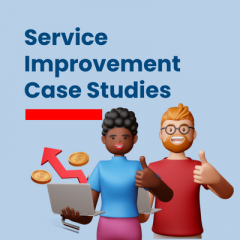
by Kerry Burgess, Service Desk Assistant Manager at UKN Group
People power businesses.
We do business with those we get along with. In this age of technology and digital connections, it’s those personal relationships that drive growth and achieve strategic objectives.
However, when it comes to delivering client needs and keeping businesses operational, we would not get far without technology. IT service desks keep everything that runs businesses and connects them working. Making it more important than ever that service desks are user-friendly and meet clients’ needs.
In some companies, such as tech firms, service desks also double as front-line customer support functions, making them even more important since these contact points define the customer relationship.
Here are five ways to ensure your IT service desk is providing a first-class user-friendly service.
1. Listen to customer needs
Put customer (end-user) needs first. Start with them. Don’t let the technology lead the processes; ensure the technology is configured around user-needs and they feel looked after. Make sure they can easily provide feedback and learn from any complaints.
Putting customers first also means taking a proactive approach to service delivery. Work to provide services that pre-empt customer needs; which may mean providing enhanced self-serve options to resolve common problems. Alongside that, ensure communication flows freely between the service desk and customers, which could include email newsletters, blogs, and resources that will help users solve recurring problems themselves, especially when working with customers who are keen to learn about new technologies quickly.
2. Have clear, scalable human-centric processes
IT service desk processes need to be documented. Without clear processes, that can be scaled; you can’t deliver a first-class service. It’s also harder to make improvements, changes and train new team members. All these processes should be focused on customer needs, with changes made when new learnings come to the forefront, new tech is integrated, and self-serve options deployed.
3. Provide useful self-service tools
Self-serve is useful, to a point. In a company where everyone uses smartphones and is quite tech-savvy, self-serve can solve a myriad of problems quickly and easily without absorbing human resources.
At the same time, too much self-serve can be a problem. Especially when technology gets between and blocks human interactions. Proactive problem solving is one way to fix this issue. High-volume recurring problems shouldn’t keep happening; these are things that a proactive approach to resolving incidents should eliminate for good.
Some recurring problems can be fixed with new technology, such as secure password management tools to prevent the dreaded, “Help, I need my password reset” problem on a Monday morning.
Whereas others, that occur less often, could be resolved with short training videos or an easy-to-search IT knowledge base, with clear guidelines showing end-users what they can fix themselves, or what needs to be referred to the service desk. If problems are escalated, manage expectations by providing information on the level of support they are likely to need, and the process involved.
One way to provide useful self-serve tools is to give people an idea of service level timescales so that they’re not in the dark about how long something might take. Empowering customers is a valuable way to make them feel included in the process and able to plan accordingly when something may take longer than they expect.
4. Deploy fit-for-purpose technology
IT service management (ITSM) tools have evolved extensively in recent years. Getting the job done and hitting performance targets requires you to have a wide range of capabilities, from automated bots to self-serve portals and communication channels (including Live Chat) that meet modern customer needs.
When you are serving hundreds or thousands of customers you need to ensure these solutions are deployed at scale, which might involve a service desk app, so they can access support tickets on the go, especially when they’re working remotely or around the world.
5. Keep learning, keep improving
Delivering a first-class service at scale is all about learning from customer feedback, data and the results achieved compared to the targets set. IT service desks only get better when they invest in reporting systems, continuous training and personal development.
Learning from the data and customer feedback is the only way to improve, with those improvements put back into new tech, tools and processes to ensure customers are being served the most effective way possible. Running a user-friendly IT service desk is difficult with limited human and tech resources. Companies in that position, with a small IT desk and growing demands, often find that outsourcing is the most cost-effective way to ensure first-class service is delivered consistently.
For more information about UKN Group, visit their website, or call: +44 (0)845 643 6060























